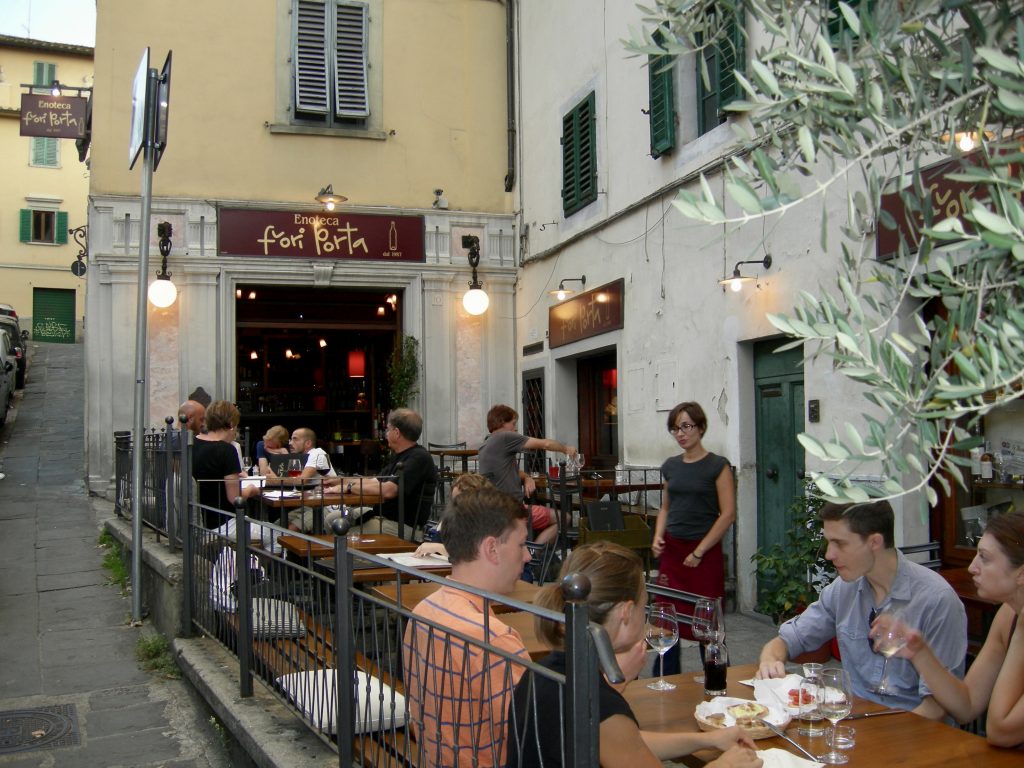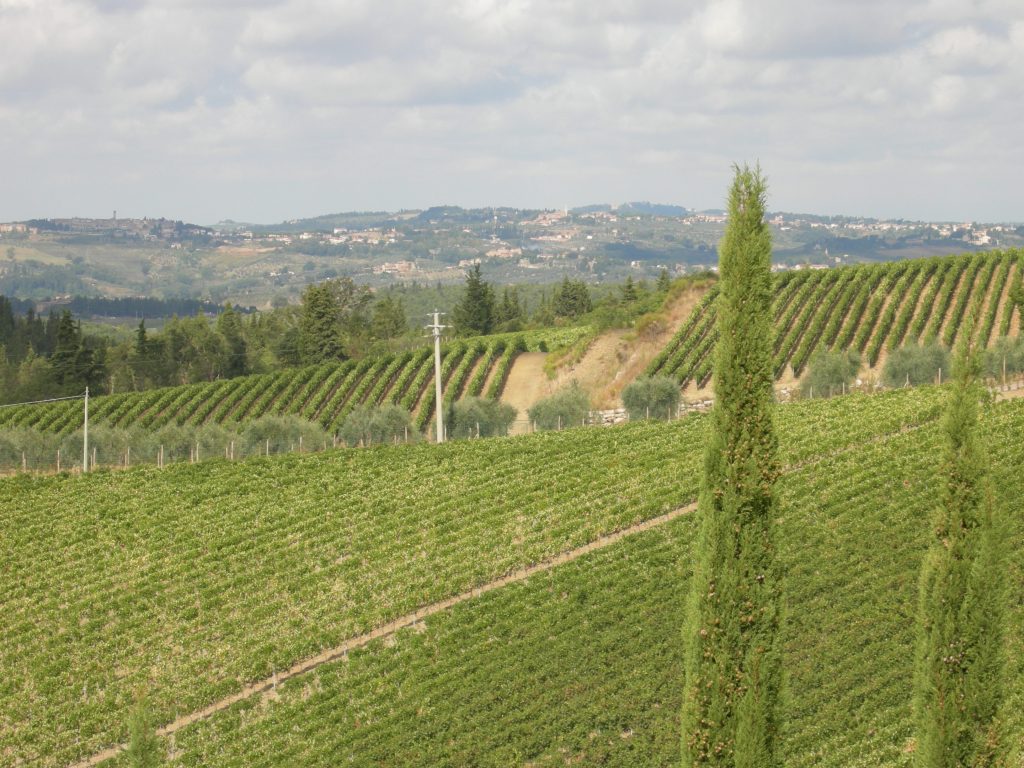Ah, Toscana…mio preferito. We may not be able to travel to Italy right now, at least not from here in Canada, but we can experience a close facsimile by doing the next best thing: cooking a traditional Italian meal and serving a Tuscan wine to go with it.
Last night my wife made us a delicious classic Italian dish: Osso Buco slow-braised with sofrito and red wine. I dug out a Tuscan treasure from my ‘cellar’ (it’s more like a basement closet) to accompany it: Castello di Ama Chianti Classico Gran Selezione San Lorenzo 2010. It was, as they say, a match made in heaven. Funny how often linguistic clichés attach themselves to anything written about Tuscany.
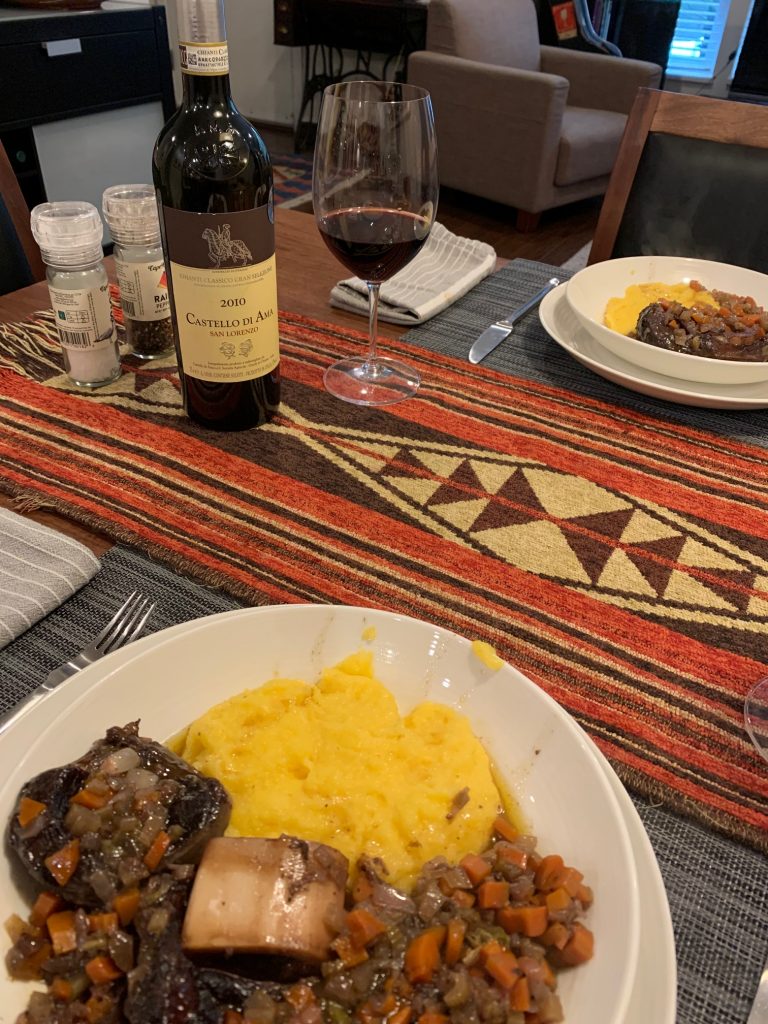
Let me begin by getting the wine geek stuff out of the way: ‘Gran Selezione’ is a relatively new legal classification of wine from Chianti, the heartland of Sangiovese-based Tuscan red wine. It occupies the peak of the so-called ‘quality’ pyramid, with Chianti Classico Riserva just below it, followed below that by Chianti Classico, and then simple Chianti making up the base. If that sounds slightly confusing, blame it on the Italian penchant for bureaucracy. It gets worse, but I’m not going there.
The most important thing to remember is that Chianti Classico Gran Selezione must be made entirely from grapes owned (or leased) and grown by the named wine estate (‘Tenuta’ in Italian). It is, in effect, an estate wine. And in theory at least, it should be the best wine an estate makes, although several Chianti producers eschew the Gran Selezione moniker and continue to label their best wine Chianti Classico Riserva, and offer them at lower prices than GS versions of what is virtually the same wine. Go figure.
Back to our wine last night: At ten years of age, it was sublime: smooth, sensual, savoury Sangiovese (oops, there’s the clichéd alliteration, again). It offered up dark (black cherry) fruit notes along with tobacco leaf, smoked meat, tar and crushed violets. There was a deeply satisfying, dusty earthiness to the velvet-smooth tannins, and a long, svelt finish that went on and on, with a hint of that typical Italian ‘bitterness’ right at the end. And the high acidity cut through the fatty meat brilliantly, as the best Italian wines so often do. It was, in short, all you can expect from one of Italy’s best wines.
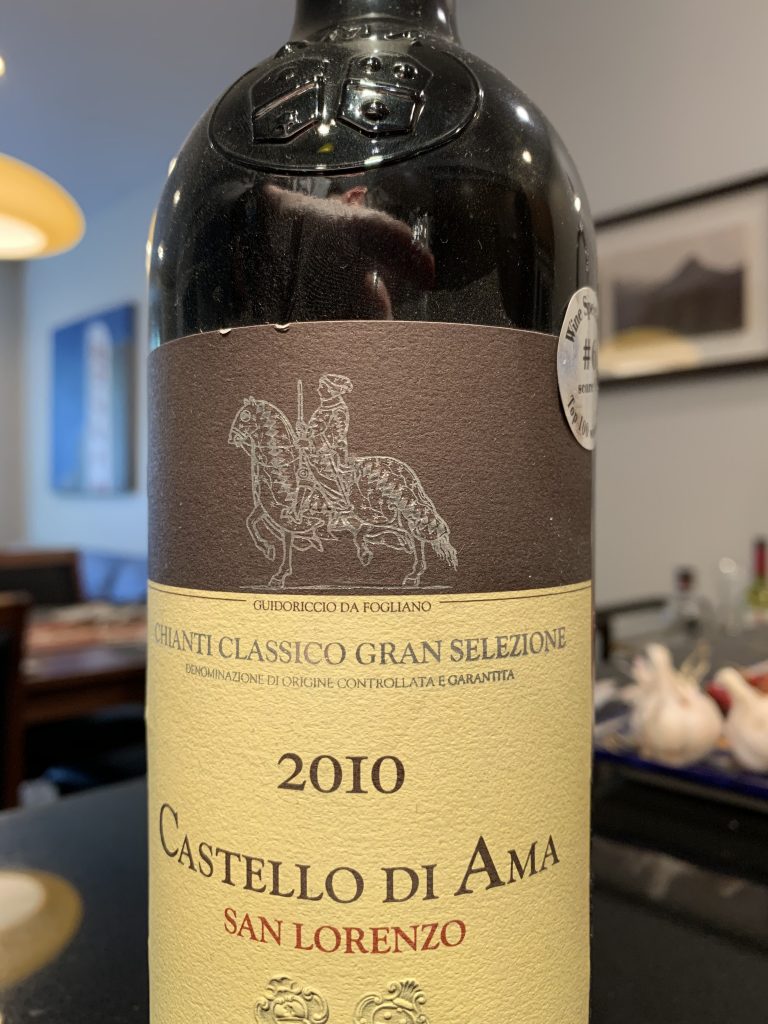
Our meal and the wine took me back to la bella Toscana. I vividly remember…visiting the iconoclastic Paolo and Marta di Marchi at their Isole e Olena estate farm, where Paolo expounded on the restrictive absurdities of the local consorzio’s rules, all while pouring us his entire range of beautifully judged wines including multiple vintages of his famed Cepparello…followed by a delicious lunch on the terrace of Paulo’s recommended local eatery, La Locanda di Pietracupa…
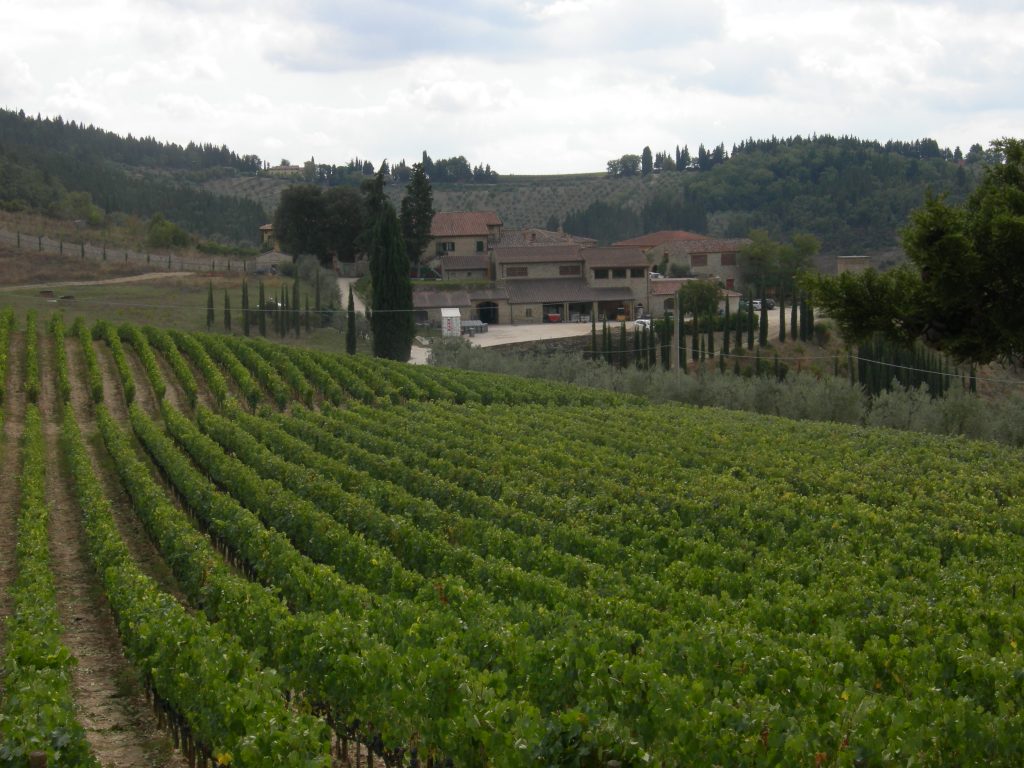
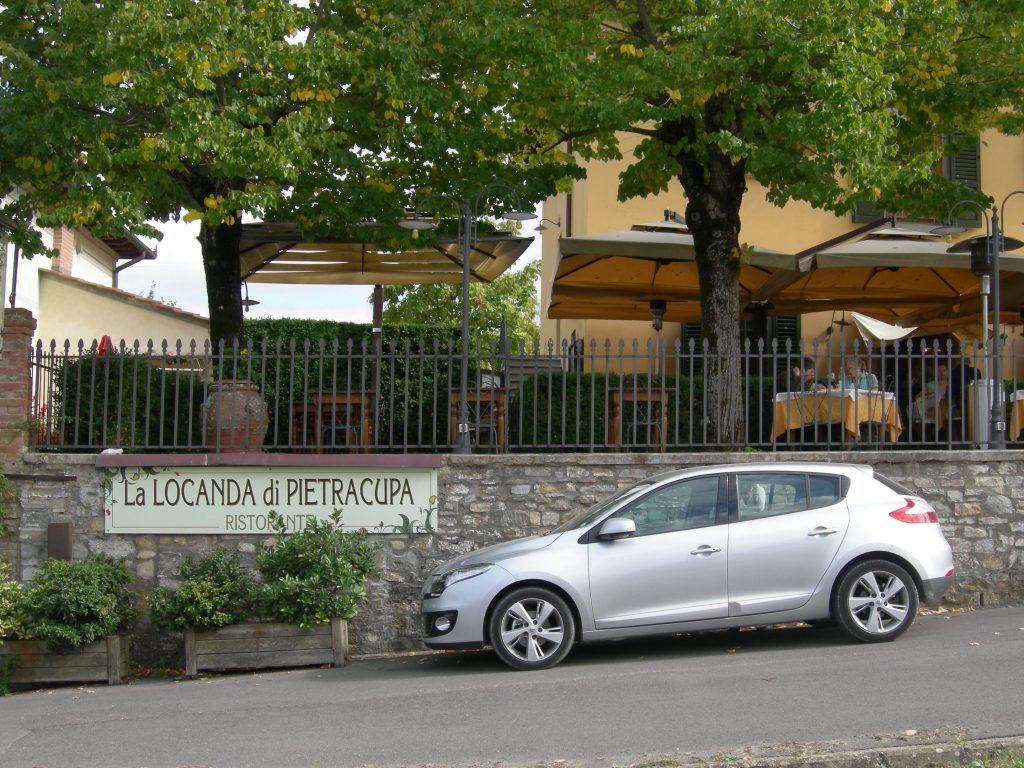
…Or a classic Tuscan meal at the ancient Badia di Coltibuono estate overlooking the Valdarno and home of the Stucchi-Prinetti family since 1846, where we drank their vibrantly fresh Cultus Boni Chianti Classico Riserva and admired the local ceramic pottery on display…
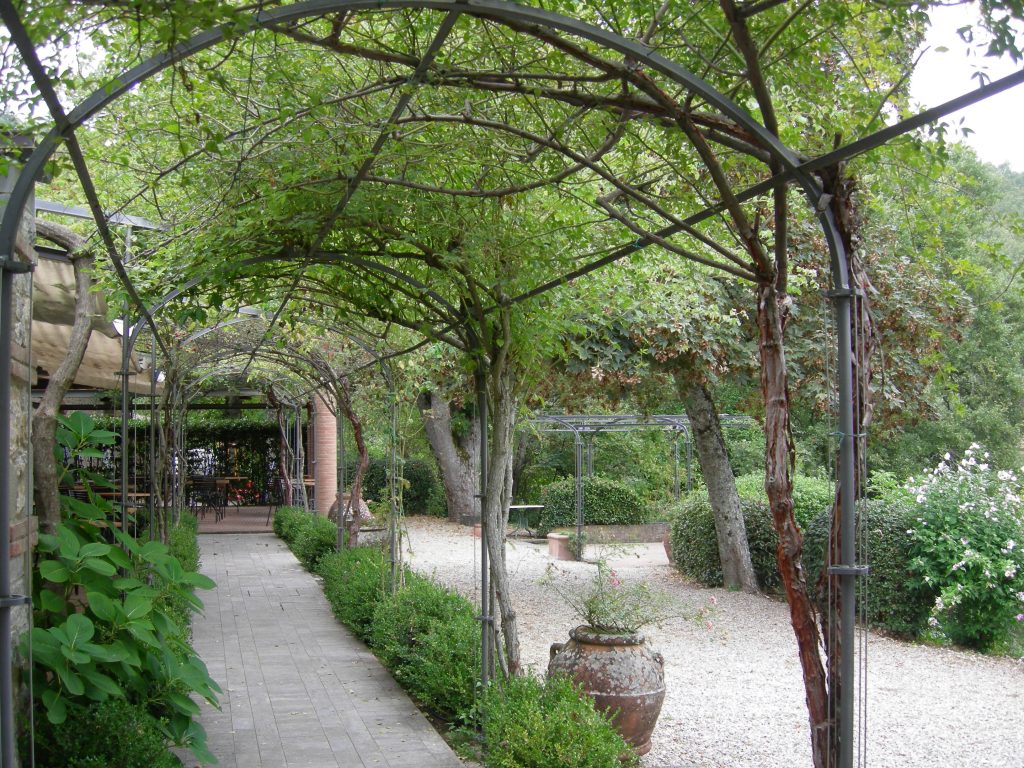
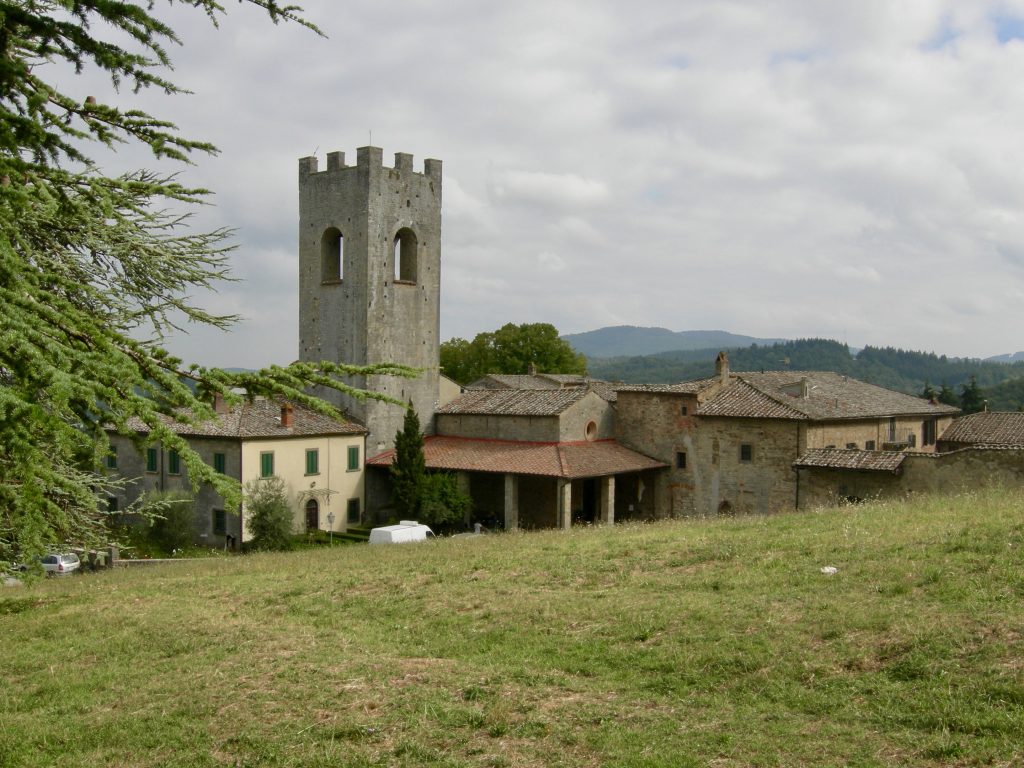
… Or our dinner of Bistecca alla Fiorentina, flame-grilled beside the table at the little Cinque di Vino osteria in San Casciano in Val di Pesa, down the road from our magnificent Villa il Poggiale country house hotel overlooking the Pesa River valley.
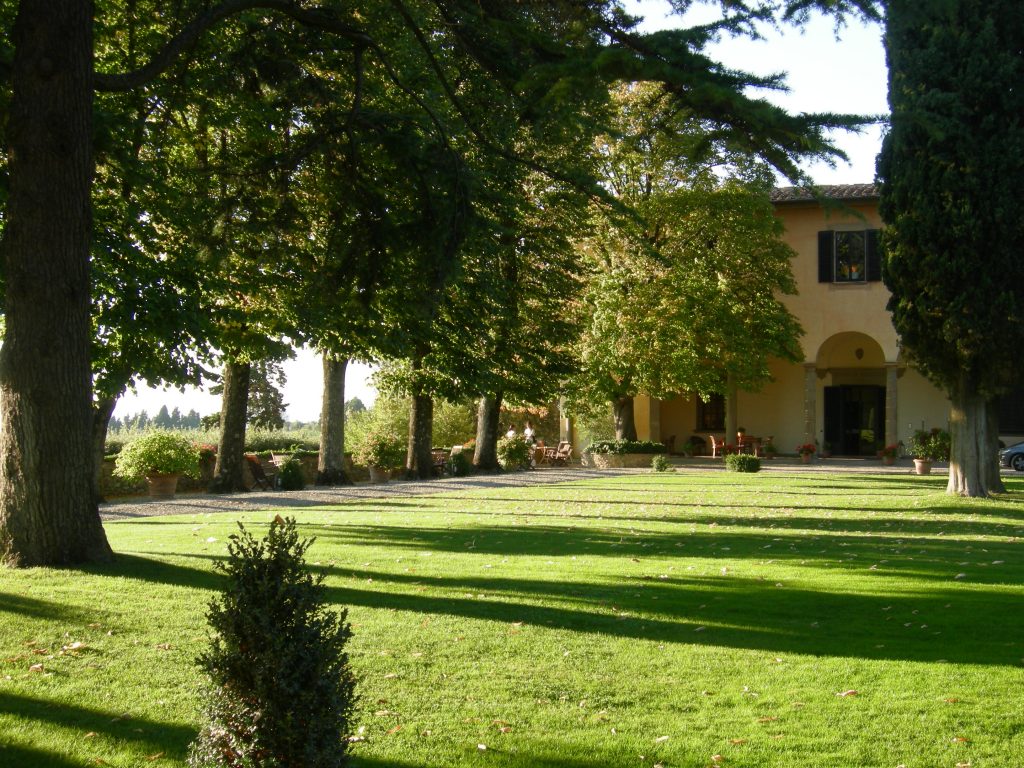
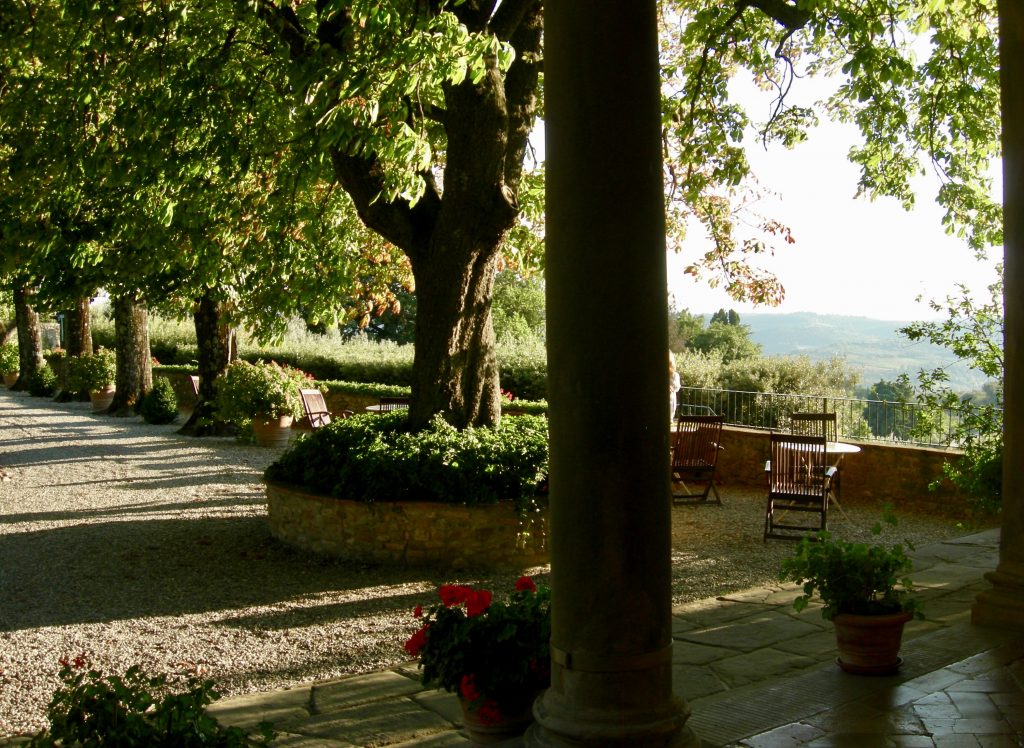
…Or our last bottle of wine in Tuscany – an elegant, complex Villa di Capezzana Carmignano DOCG, one of the very first Tuscan wines to blend Sangiovese with Cabernet Sauvignon – enjoyed on the terrace at the humble yet amiable Fuori Porta enoteca, located just outside the walls of Firenze. Ah Toscana…of such magic places and wines are my dreams fabricated.
